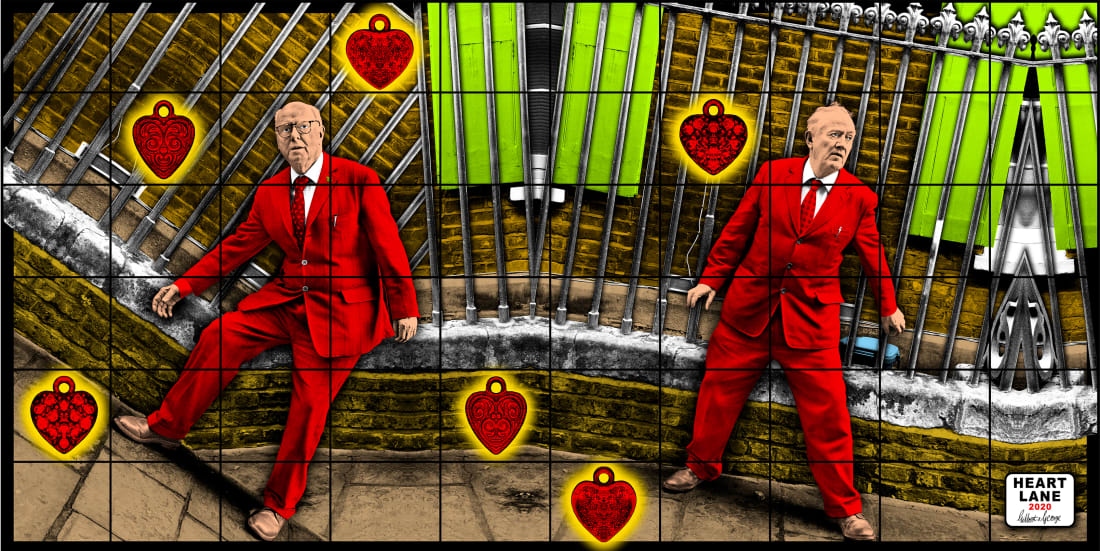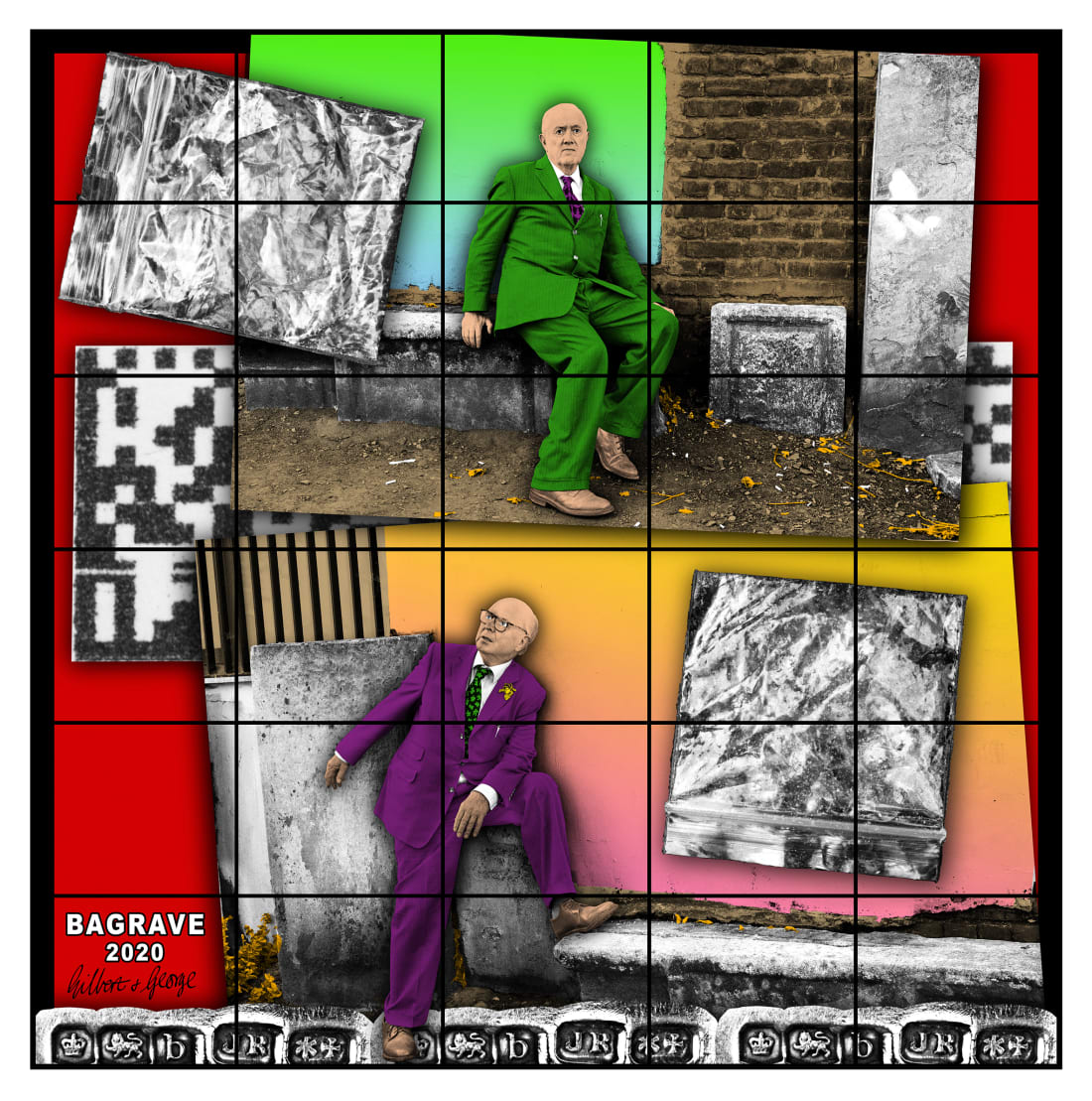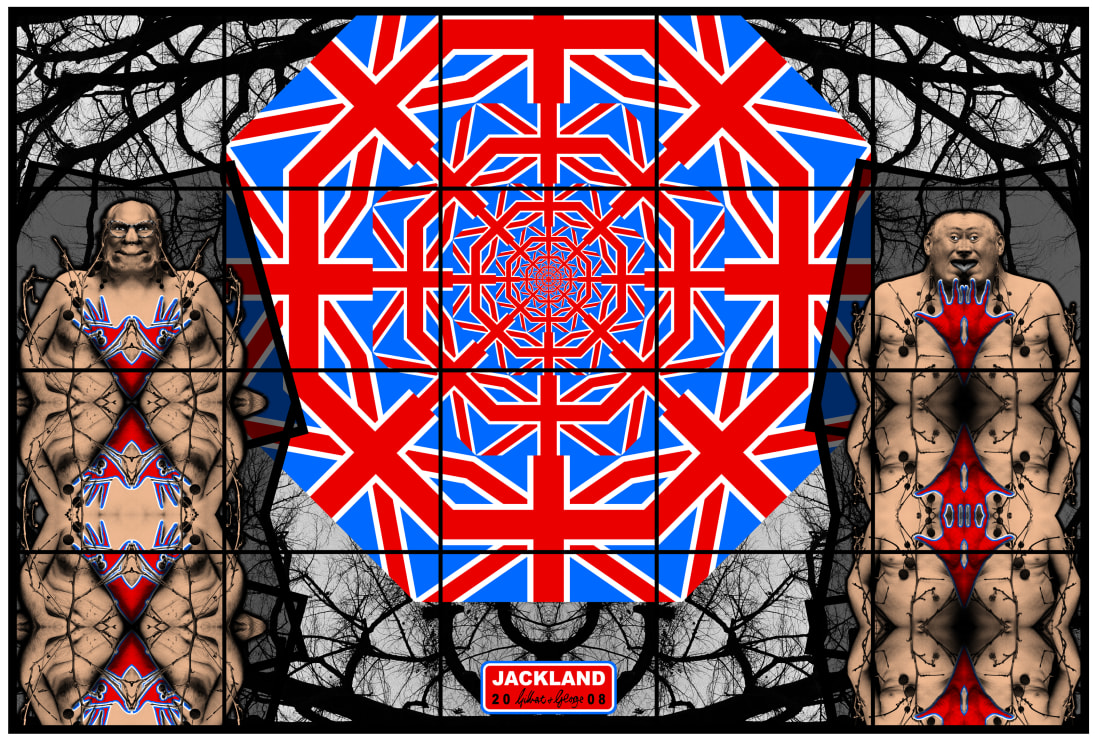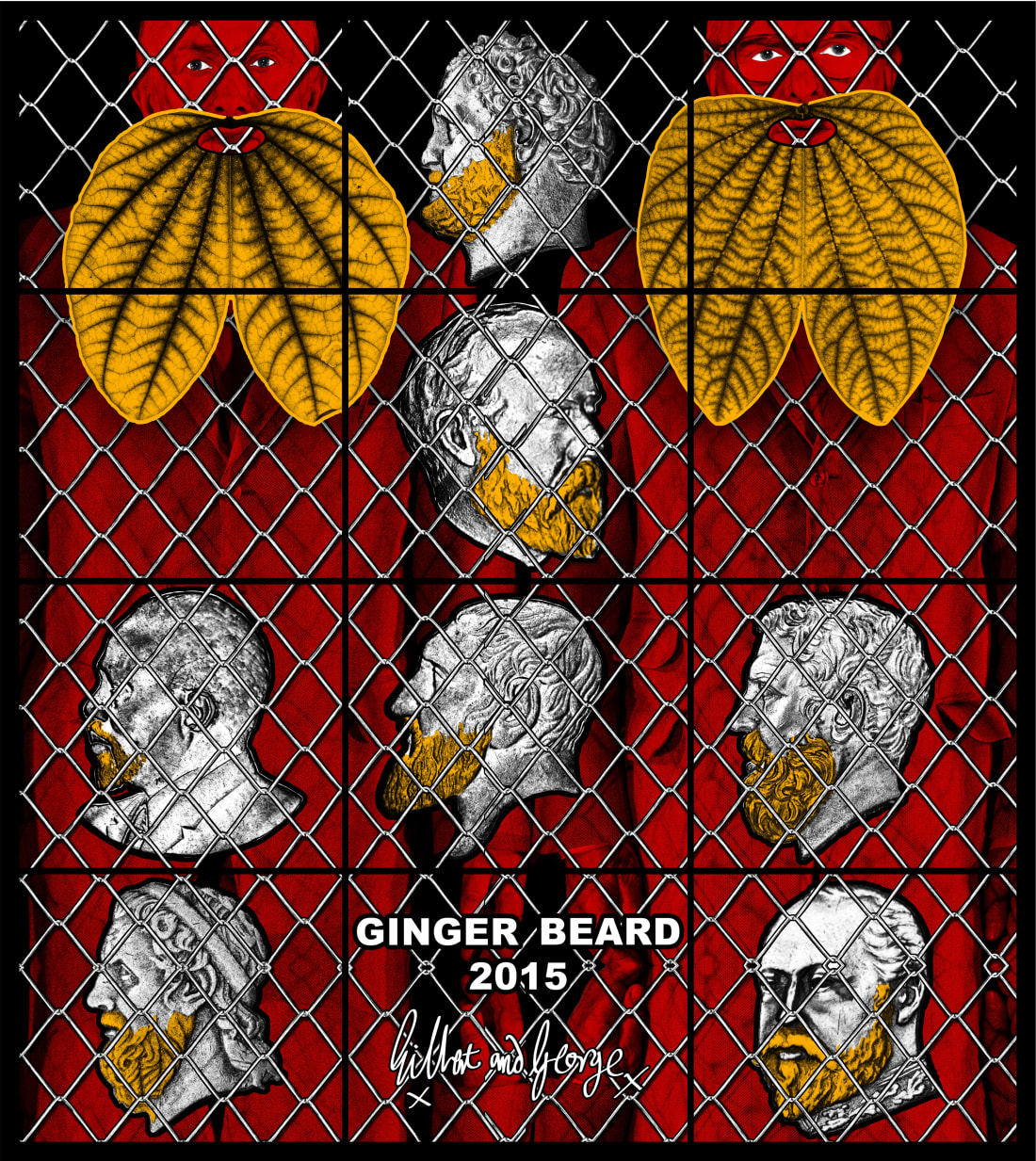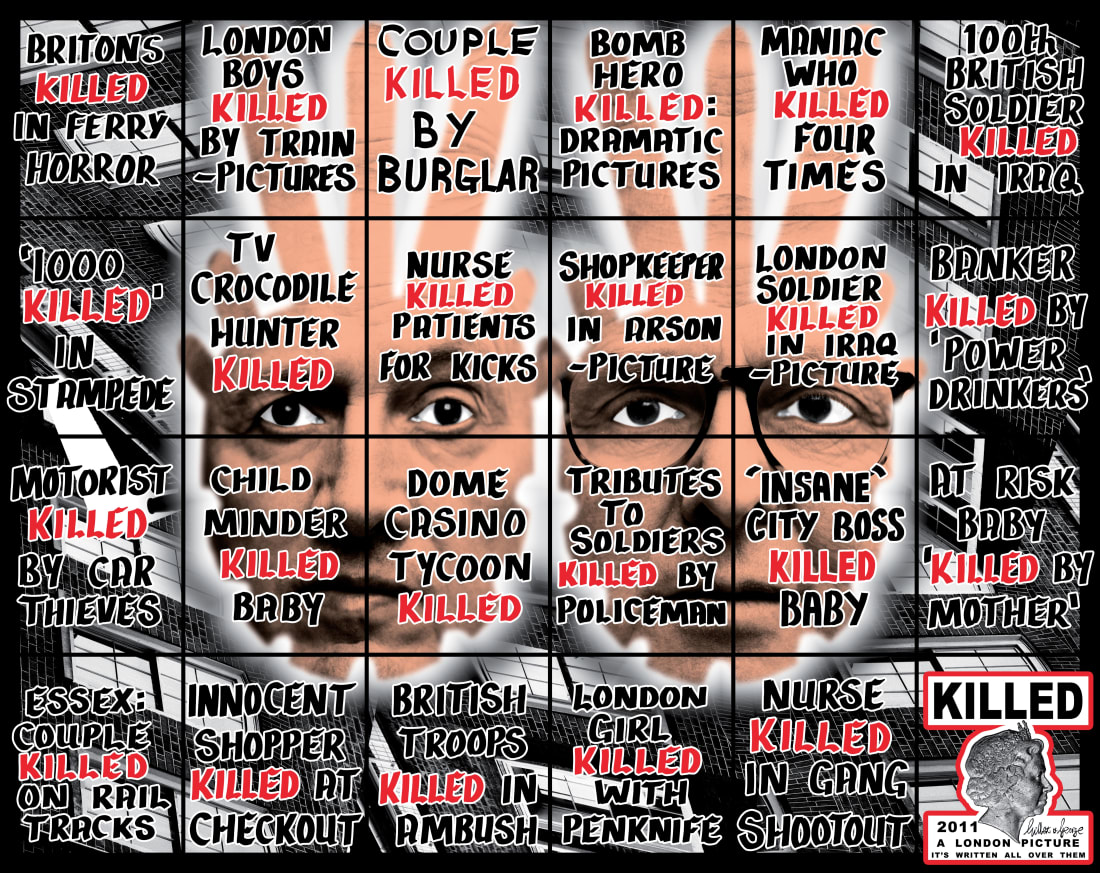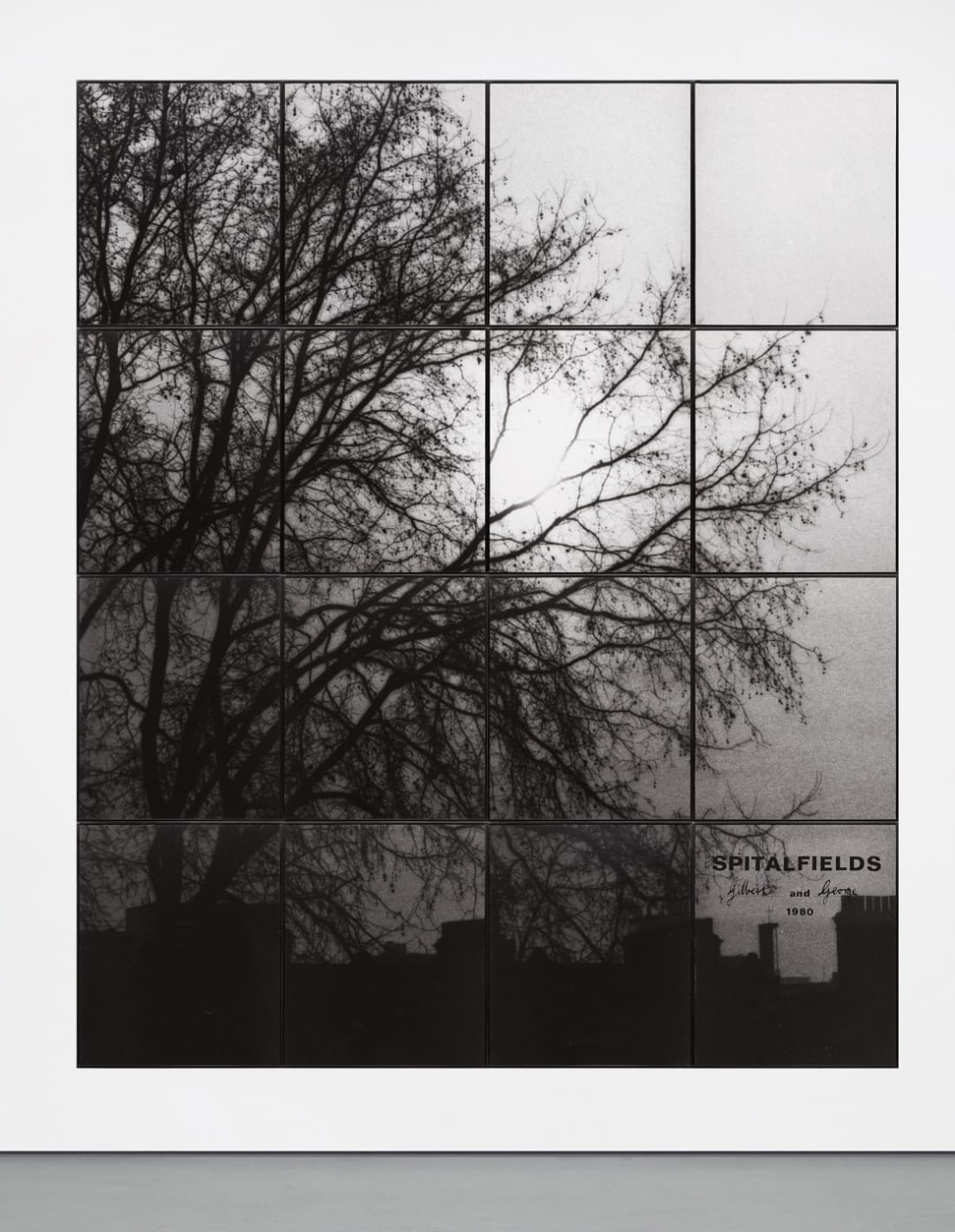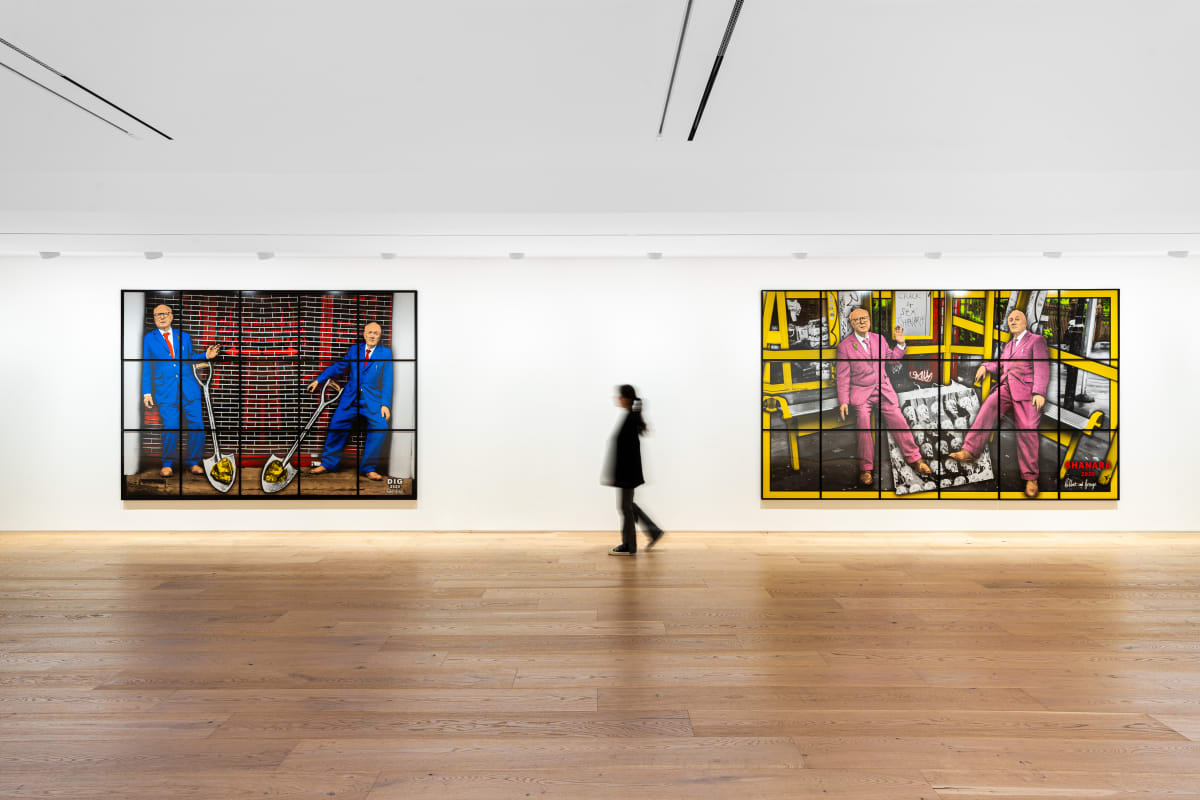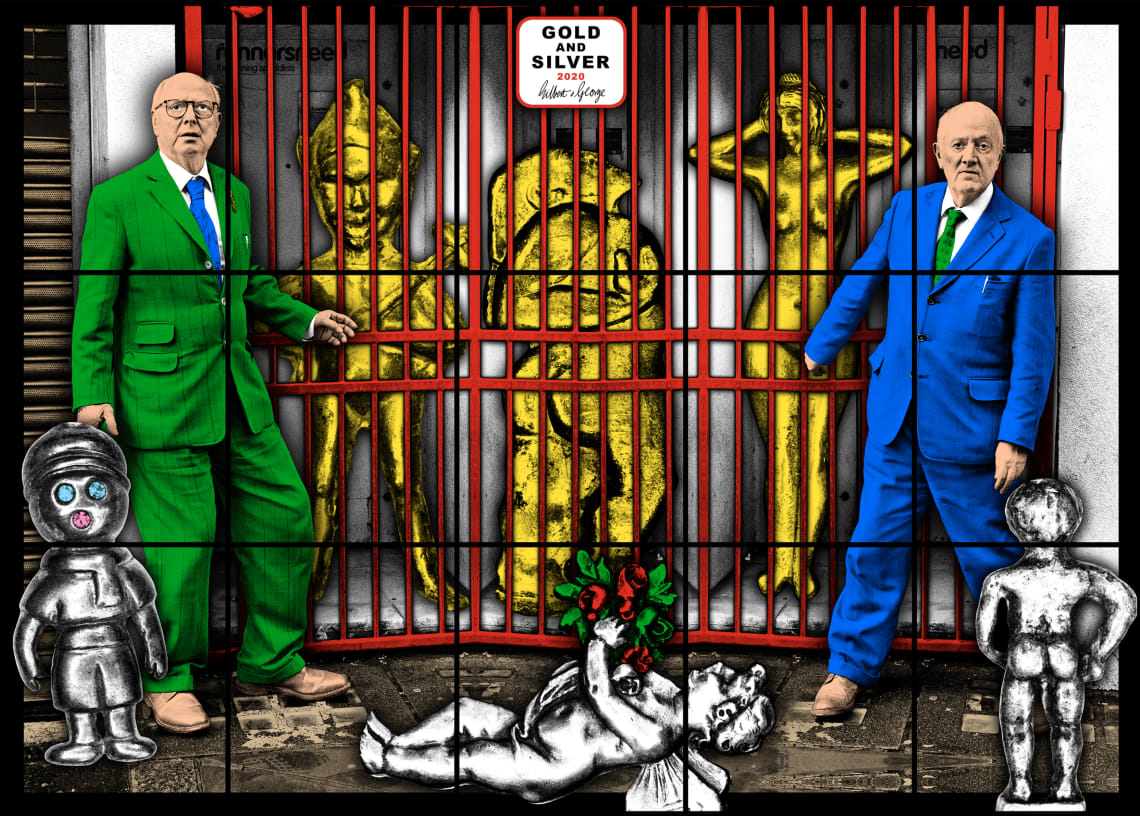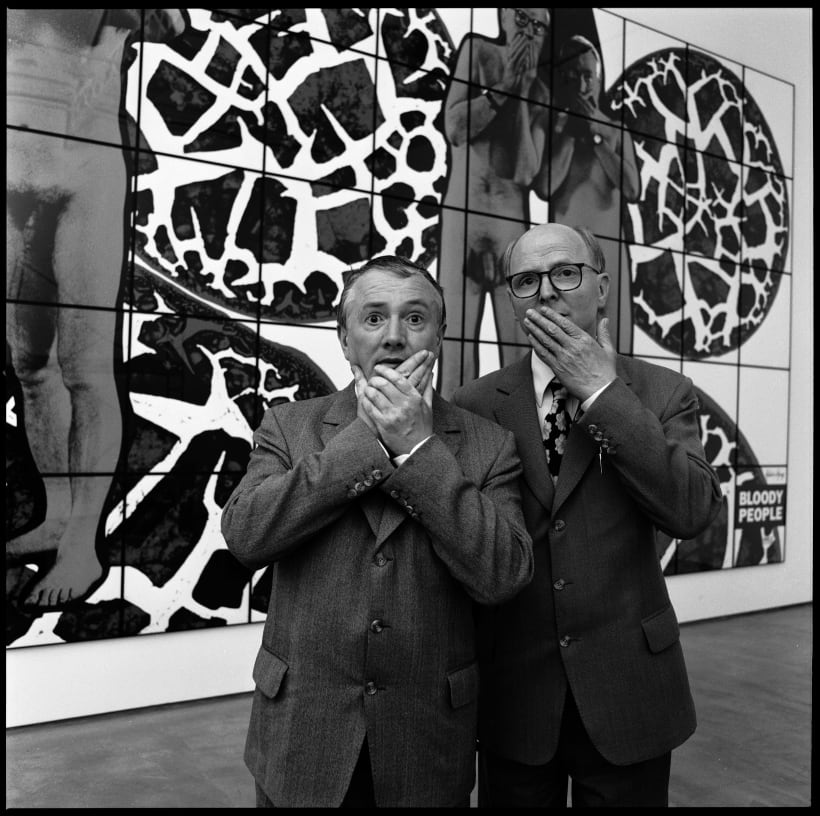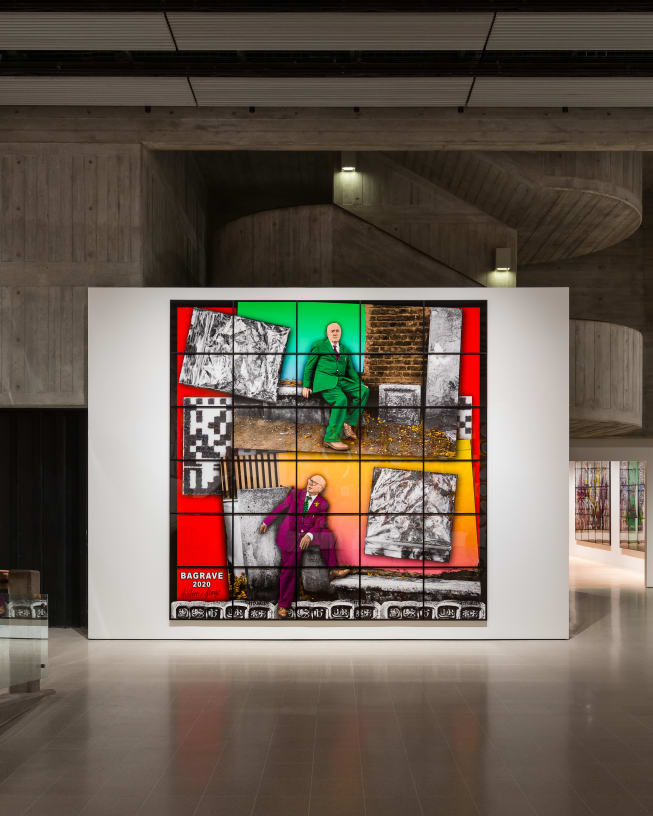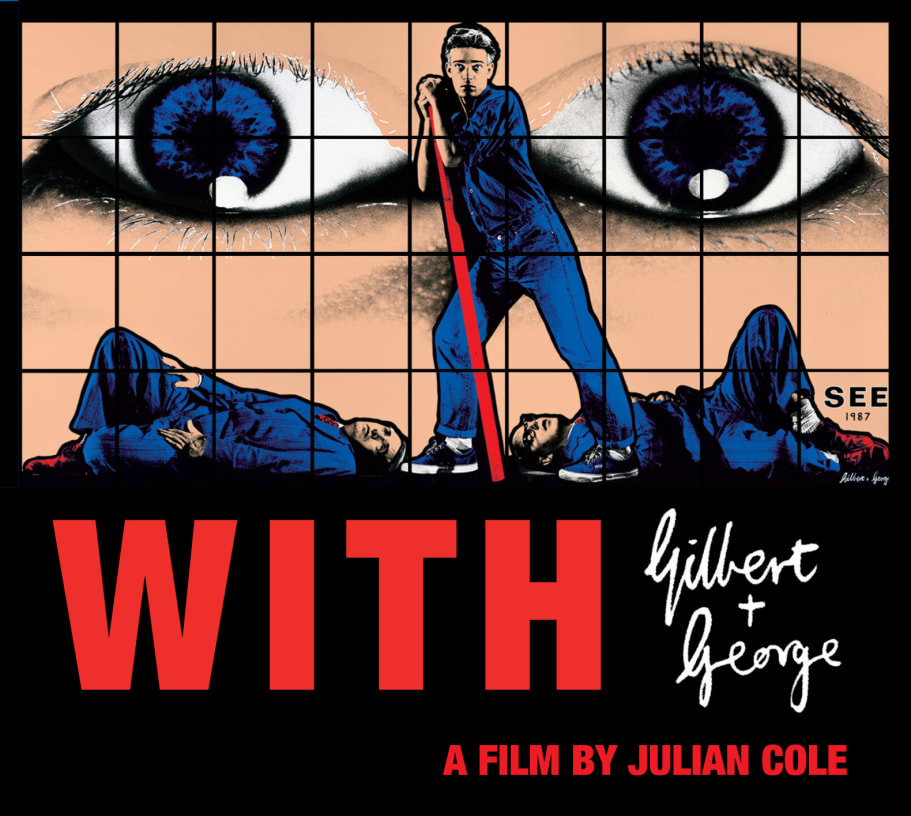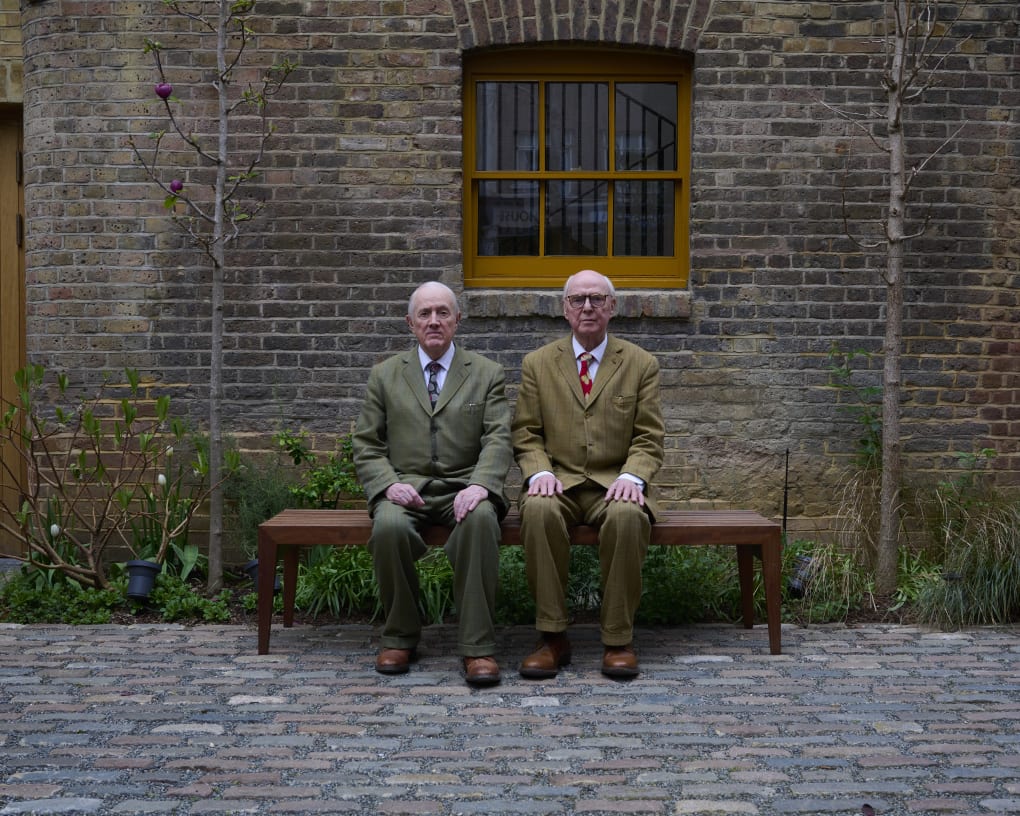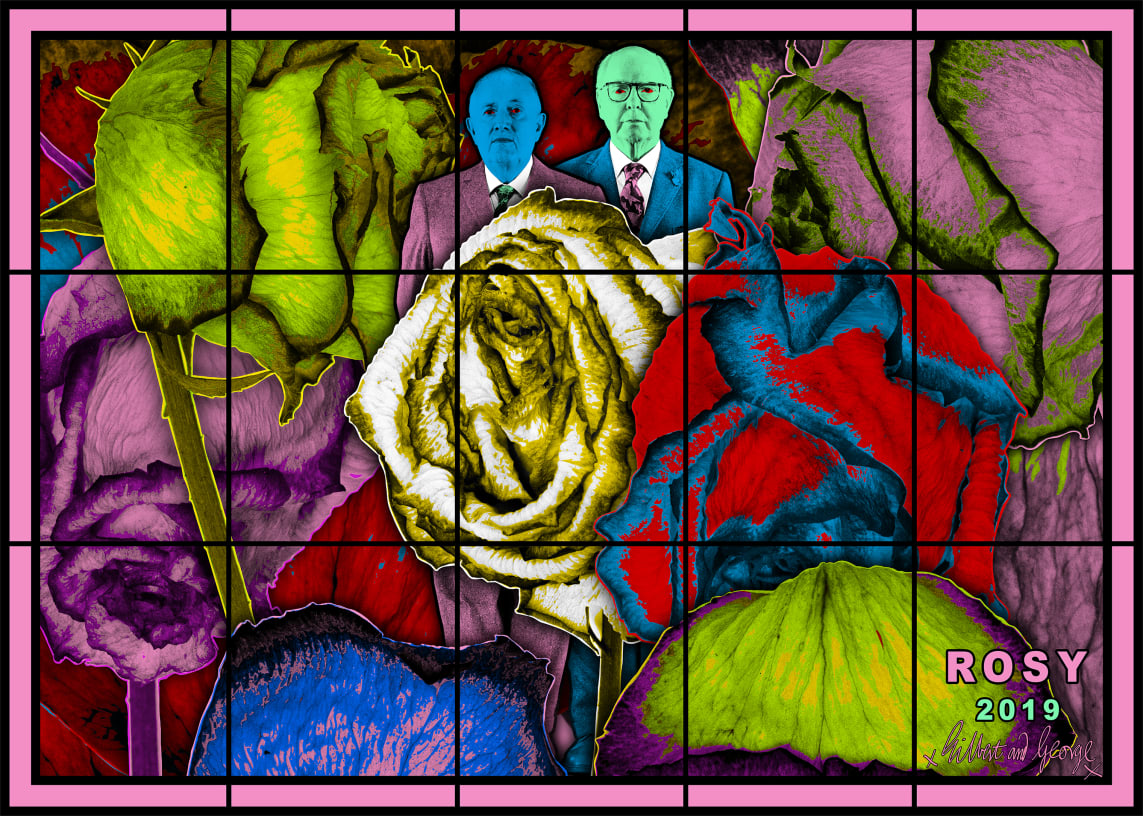

Gilbert & George
Overview
'We like it very much when the pictures take over. When they're bigger than the viewer. You go to a museum to look at a picture, but we like it when the picture looks at you.'
Gilbert & George have created art together since 1967, when they met at Saint Martin's School of Art in London and decided that their art should be understood as emerging from a single source. Theirs would be, in their words, 'art for all', in contrast to what they saw as the overly cerebral and elitist Minimalist and Conceptual work that was dominant at the time. Referring to their time there, Gilbert & George said, 'the bad things in art then were emotion, colour, sentiment, feeling, sexuality - all those were taboo'. These have become some of the themes they choose to examine in their own art.
In practical terms, this has resulted in a rich body of art defined by its focus on the world we live in from the perspective of the windows of the artists' home in the multi-layered, diverse culture of Spitalfields, as well as their attitudes to the human being, sex, religion, race, money and death. As Gilbert & George once said, 'There is nothing that happens in the world that doesn't happen in the East End first.' They are often seen in public around the local area, always together and dressed in their distinctive formal suits.
Gilbert & George's art encompasses charcoal on paper, sculpture and films, but their best-known works are large-scale, highly coloured pictures. This format developed from similar early pictures, which were mostly executed in black and white. With brief or single-word titles, usually included in bold capital letters within the picture, these images are direct and highly graphic explorations of life in the late 20th and early 21st centuries. Their art contains all the world, ranging from high to low culture, and their lexicon of sometimes shocking imagery includes penises, vomit, faeces, beards, burqas, flags, street signs, laughing gas canisters and crucifixes.
Gilbert & George have created art together since 1967, when they met at Saint Martin's School of Art in London and decided that their art should be understood as emerging from a single source. Theirs would be, in their words, 'art for all', in contrast to what they saw as the overly cerebral and elitist Minimalist and Conceptual work that was dominant at the time. Referring to their time there, Gilbert & George said, 'the bad things in art then were emotion, colour, sentiment, feeling, sexuality - all those were taboo'. These have become some of the themes they choose to examine in their own art.
In practical terms, this has resulted in a rich body of art defined by its focus on the world we live in from the perspective of the windows of the artists' home in the multi-layered, diverse culture of Spitalfields, as well as their attitudes to the human being, sex, religion, race, money and death. As Gilbert & George once said, 'There is nothing that happens in the world that doesn't happen in the East End first.' They are often seen in public around the local area, always together and dressed in their distinctive formal suits.
Gilbert & George's art encompasses charcoal on paper, sculpture and films, but their best-known works are large-scale, highly coloured pictures. This format developed from similar early pictures, which were mostly executed in black and white. With brief or single-word titles, usually included in bold capital letters within the picture, these images are direct and highly graphic explorations of life in the late 20th and early 21st centuries. Their art contains all the world, ranging from high to low culture, and their lexicon of sometimes shocking imagery includes penises, vomit, faeces, beards, burqas, flags, crucifixes, street signs, laughing gas canisters and crucifixes.
Gilbert & George first came to public attention in 1969 with an audacious act at the opening of When Attitudes Become Form, a groundbreaking exhibition curated by Harald Szeemann, first shown in Bern and then at the Institute of Contemporary Arts in London. They were not selected for the exhibition, which was expanded to include British artists, so corrected the perceived oversight by painting their faces and hands with multi-coloured metallic powder and standing frozen in the middle of the gallery for the duration of the private view in London. This was the first public instance of their 'Living Sculpture', a term they have used since to illustrate the indivisibility of their art and everyday lives.
Gilbert & George have exhibited internationally since 1970. They were awarded the Turner Prize in 1986, represented the UK at the 2005 Venice Biennale and were the subject of a large retrospective, titled Major Exhibition, at Tate Modern, London, in 2007. More recently, their art has been the subject of solo exhibitions at institutions including Luma Westbau and Kunsthalle Zürich (both 2020); Moderna Museet, Stockholm (2019); Metropolitan Arts Centre, Belfast (2018); Ludwig Museum of Contemporary Art, Budapest (2017); The Museum of Modern Art, New York (2015); Nouveau Musée National de Monaco (2014); Lentos Kunstmuseum, Linz (2010); and Brooklyn Museum of Art, New York (2008), among others.
Videos








Select Works
Ausstellungen
Publikationen

Gilbert & George
Catalogue: NEW NORMAL PICTURES
Publikationen

Gilbert & George

Exhibition poster: NEW NORMAL PICTURES

Exhibition poster: NEW NORMAL PICTURES

Exhibition poster: NEW NORMAL PICTURES

Exhibition poster: NEW NORMAL PICTURES

Gilbert & George

Gilbert & George

Gilbert & George

Gilbert & George

Gilbert & George

Exhibition poster: Pictures for Paris

Exhibition poster: Pictures for Paris


